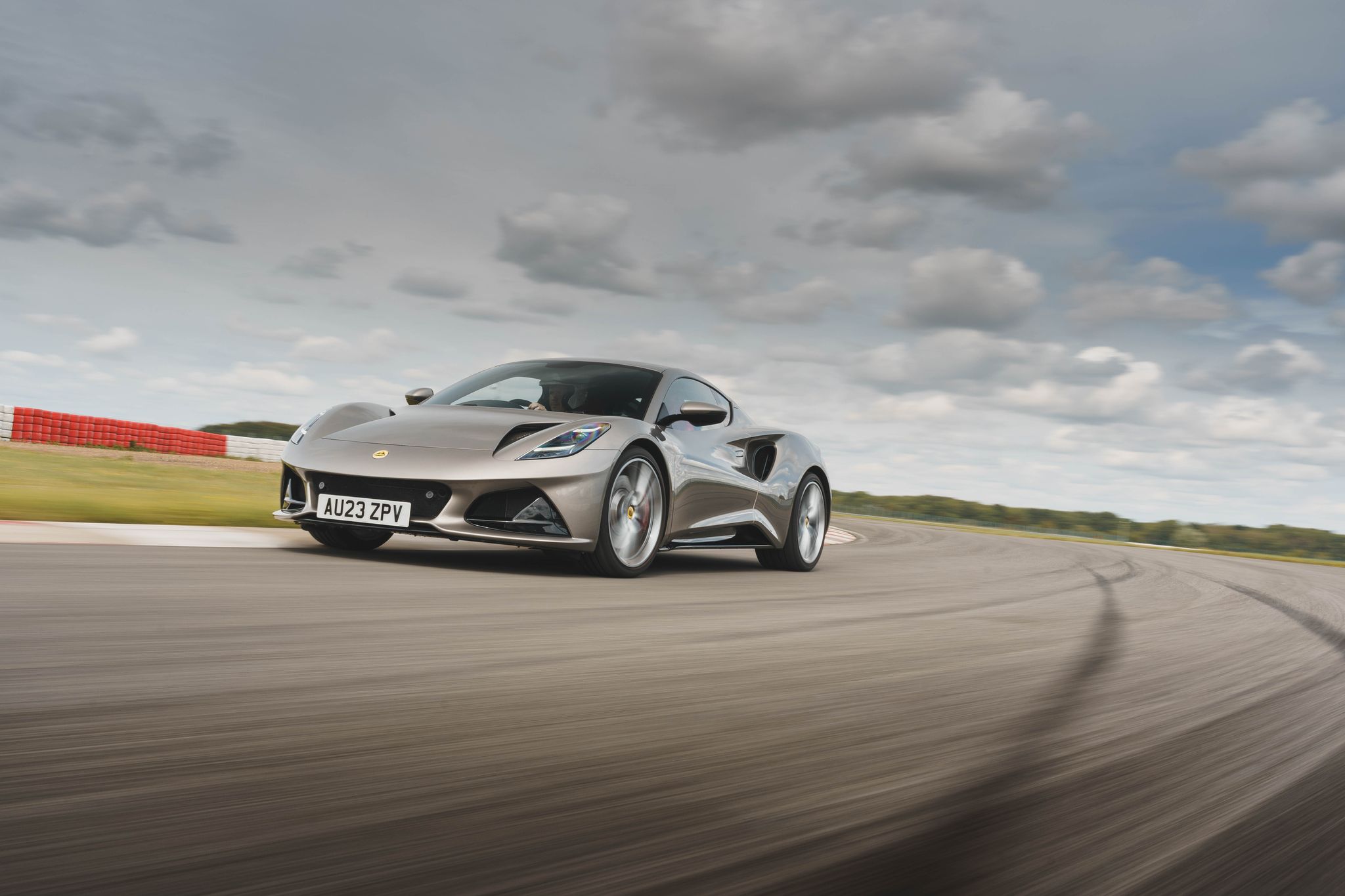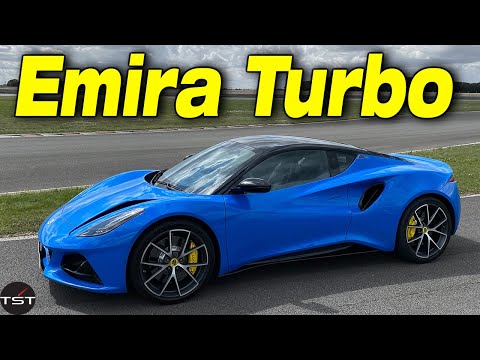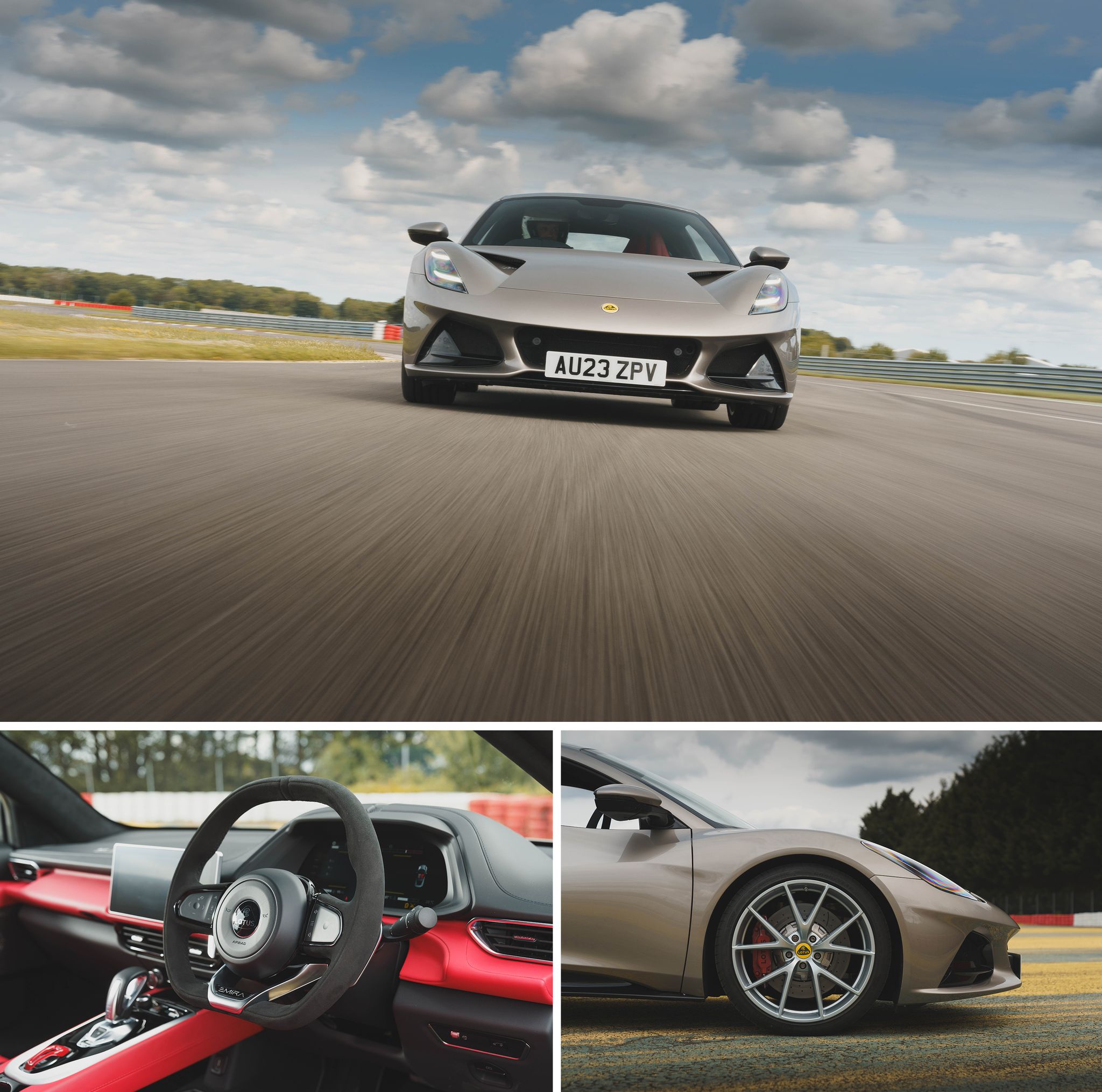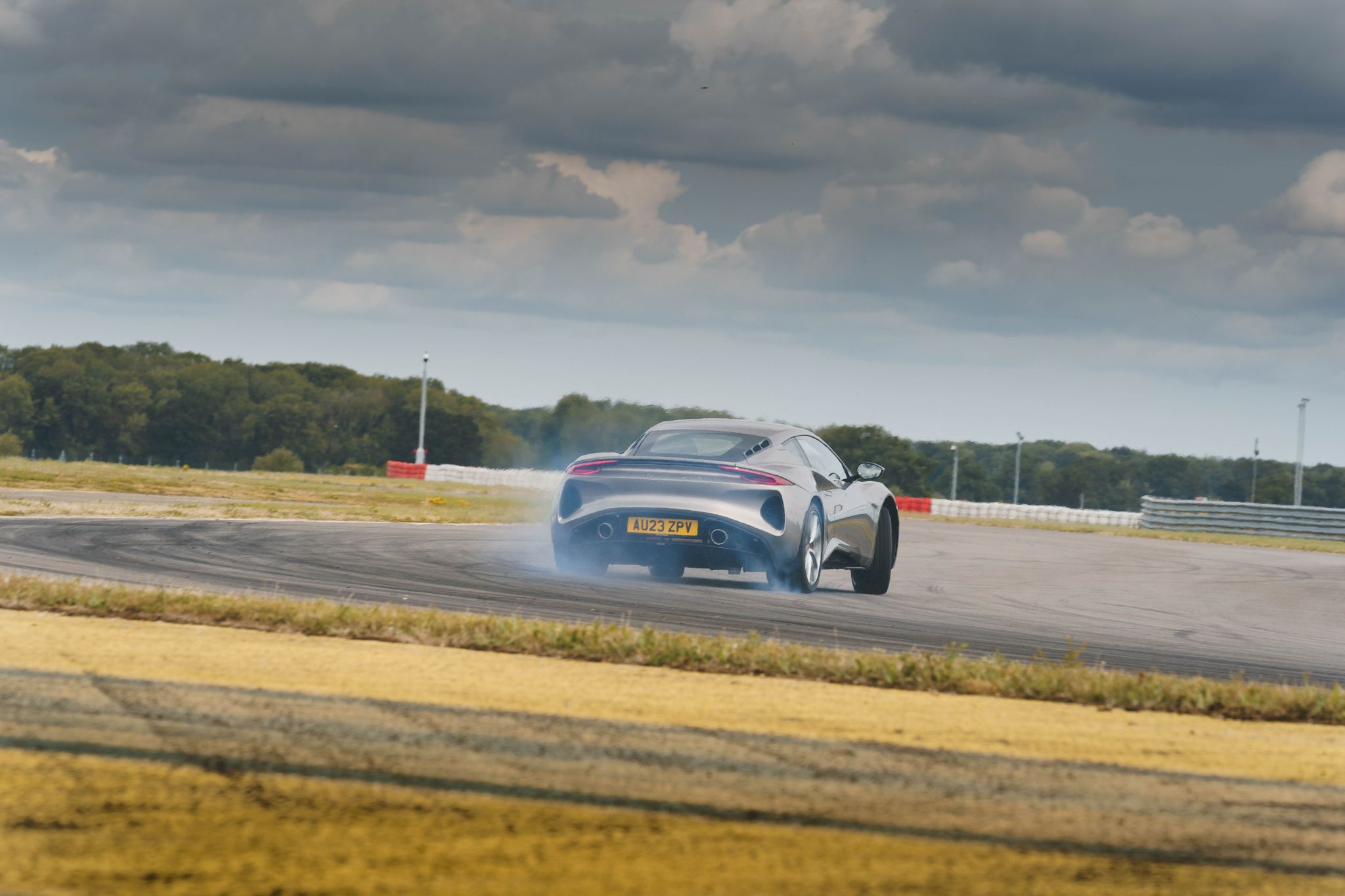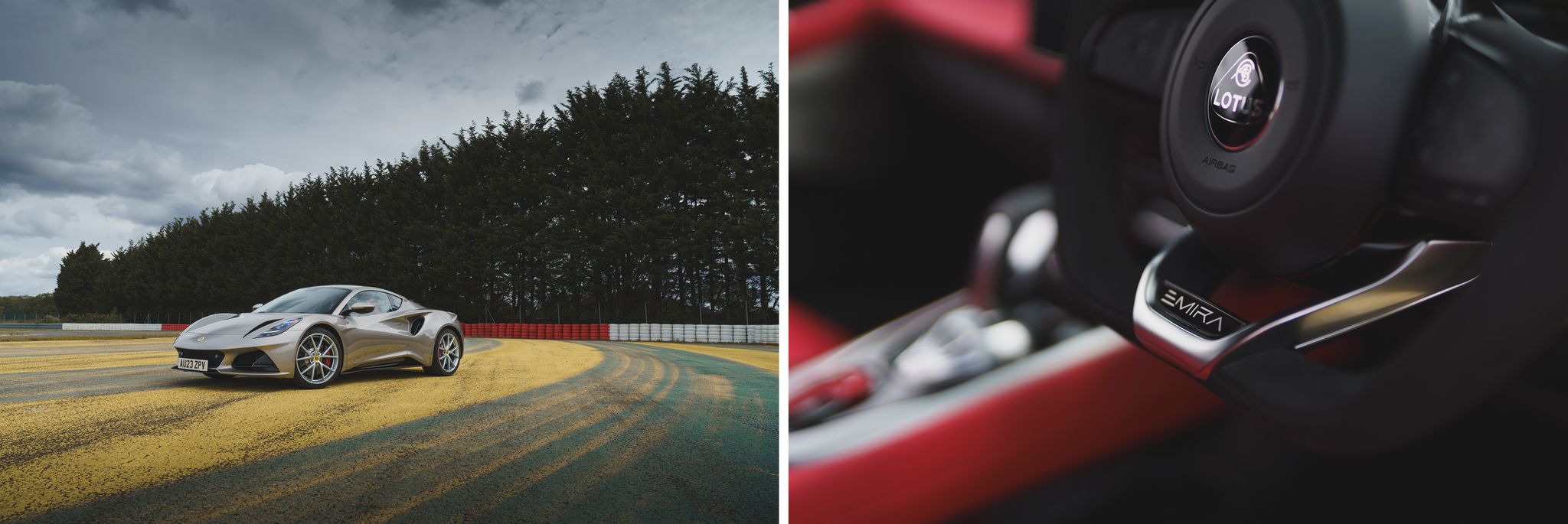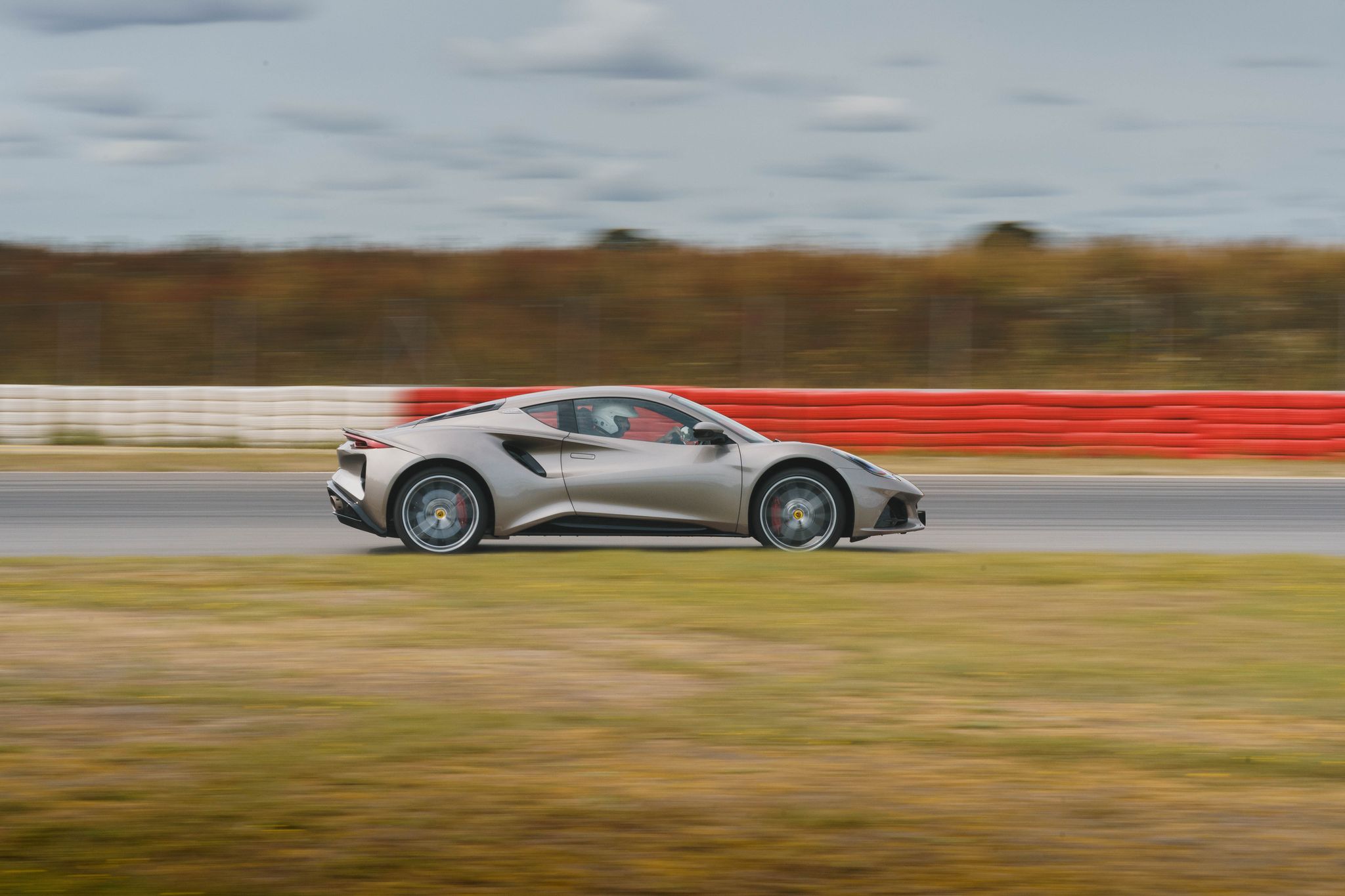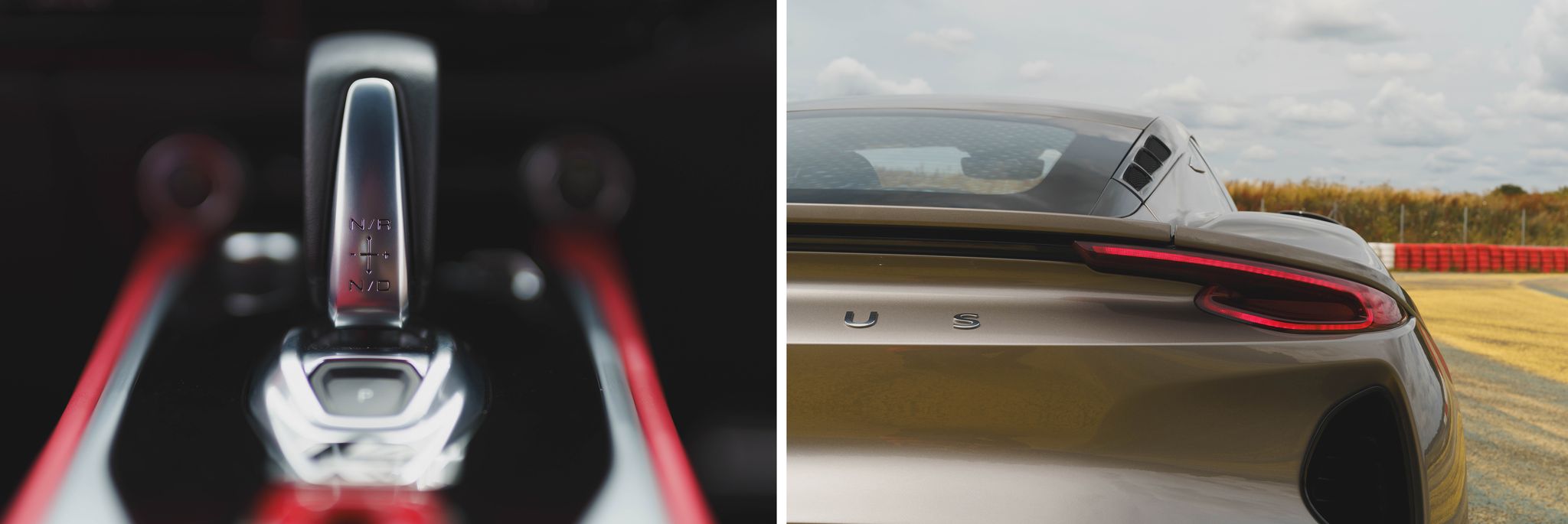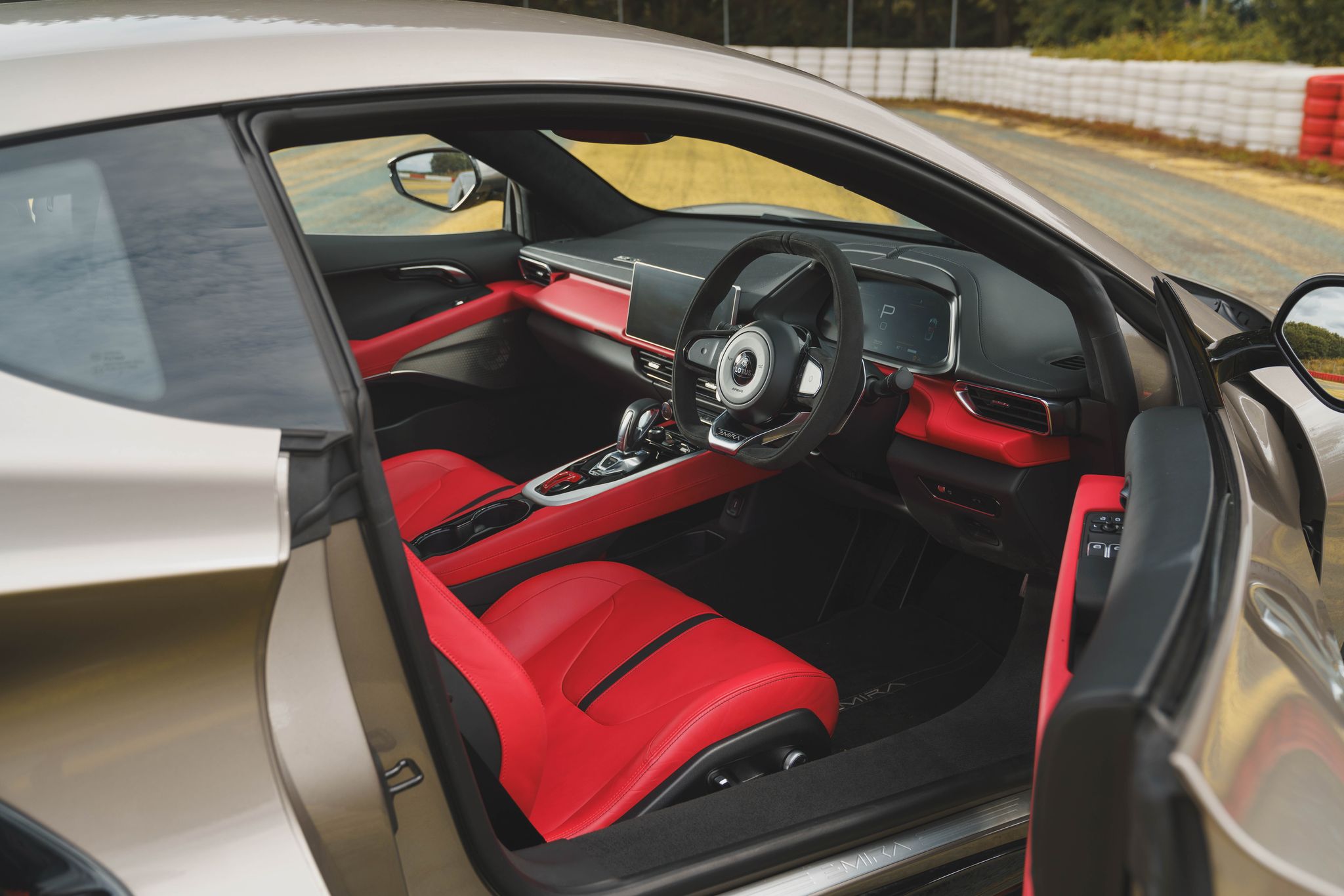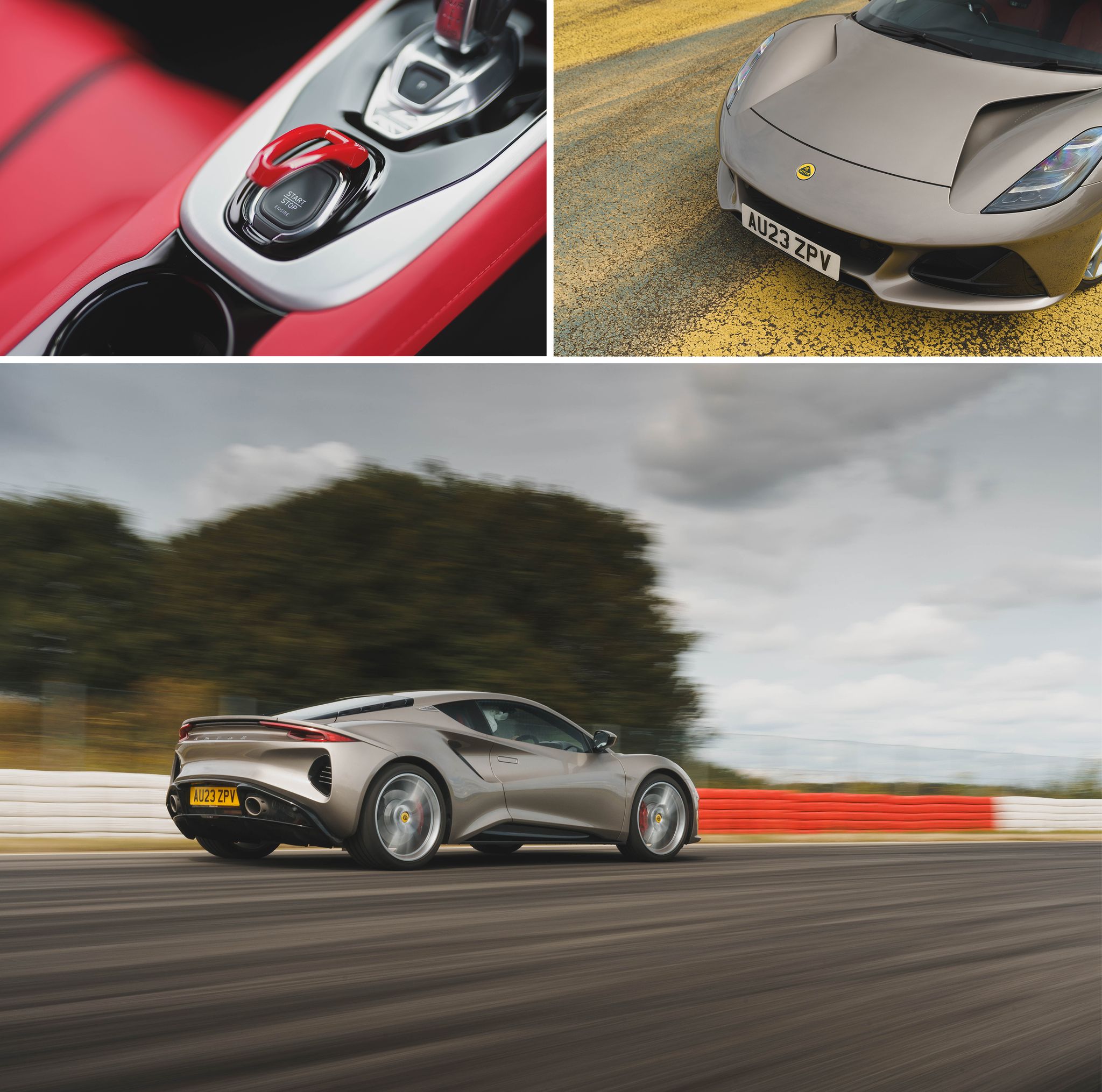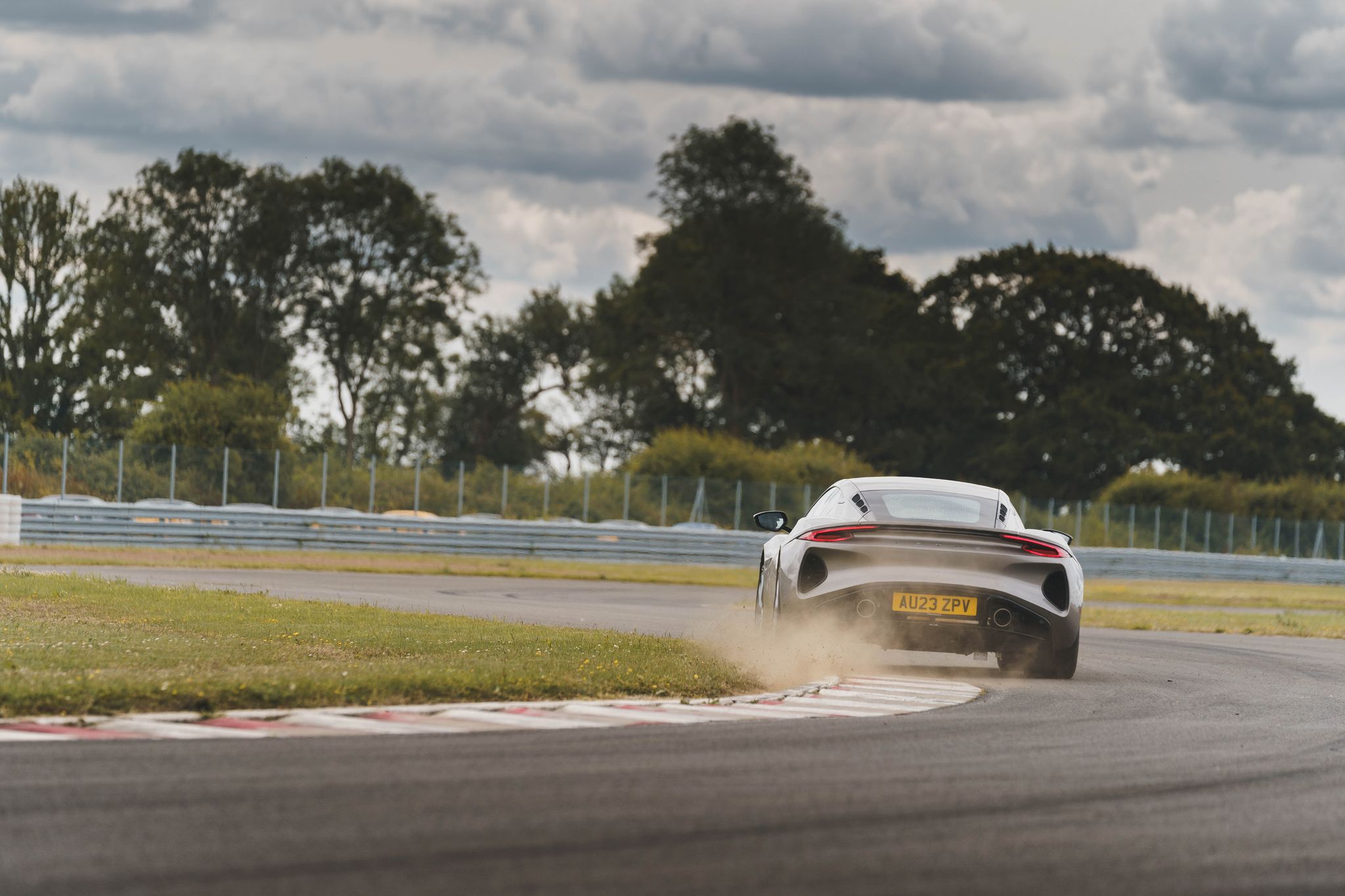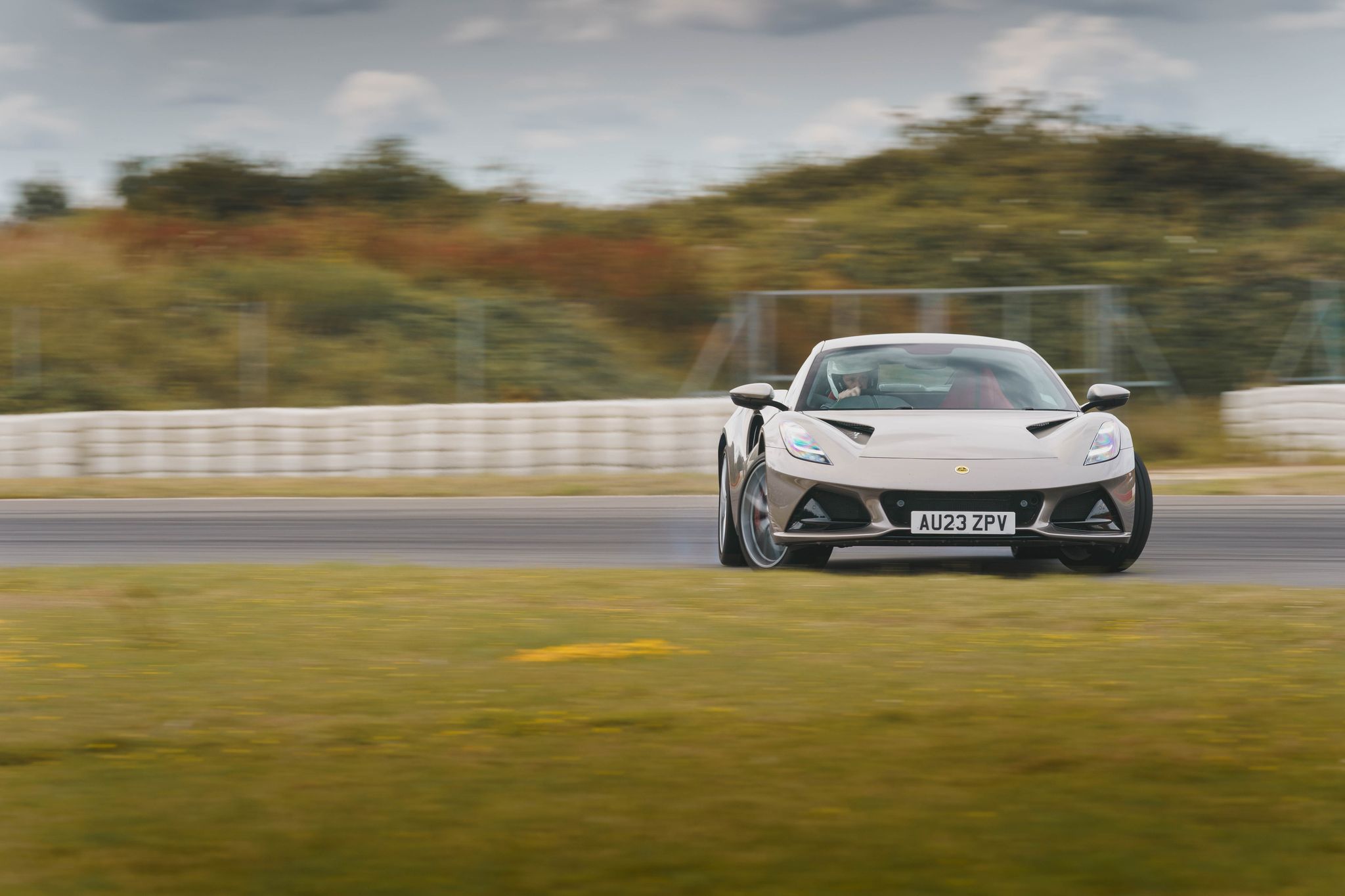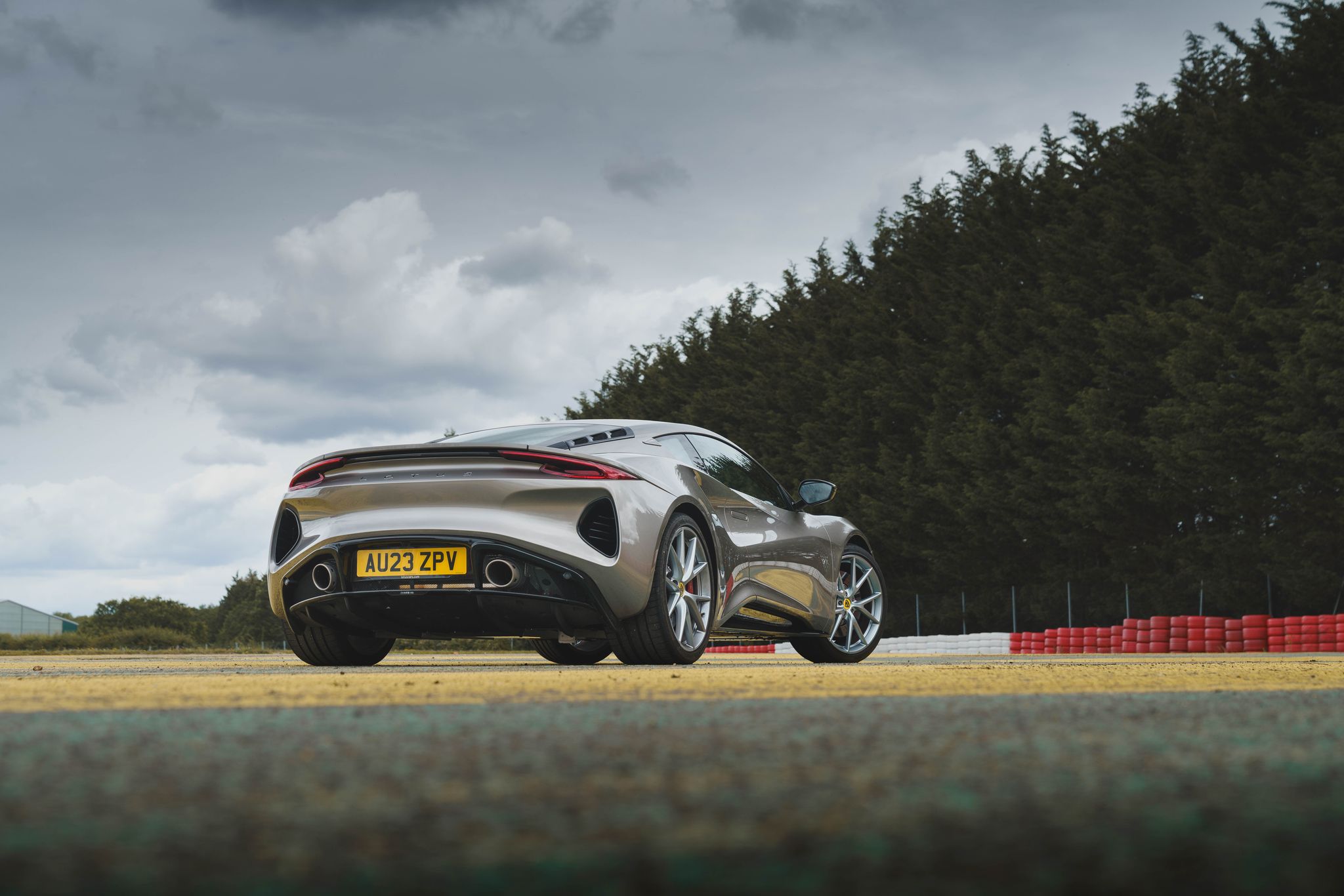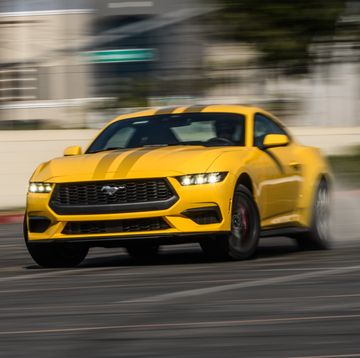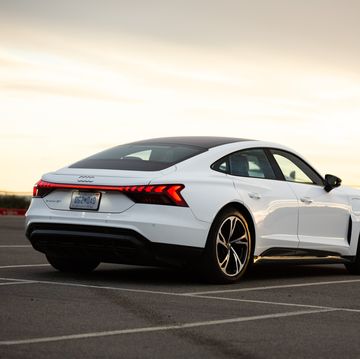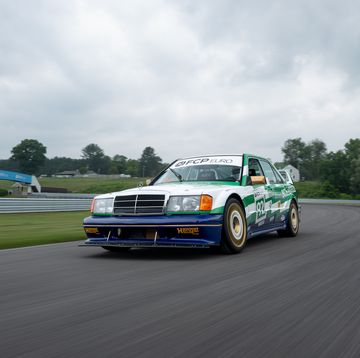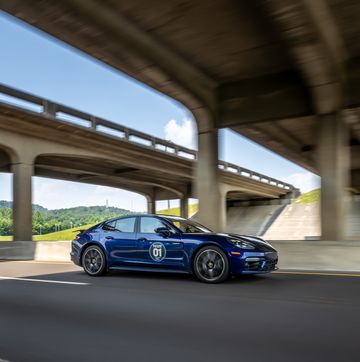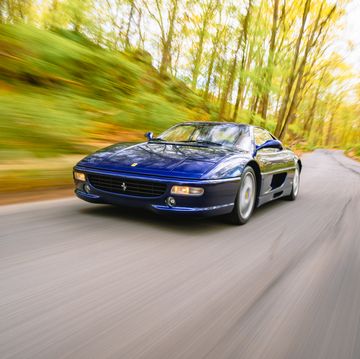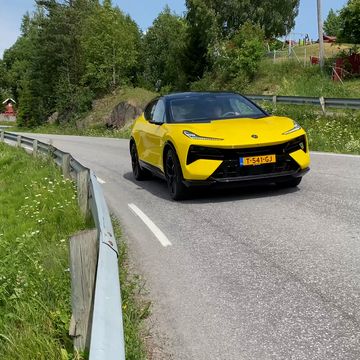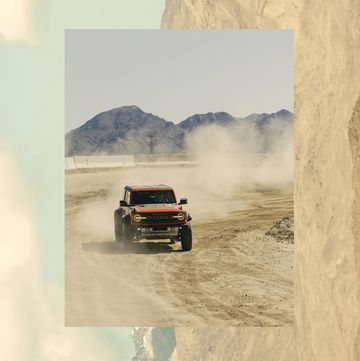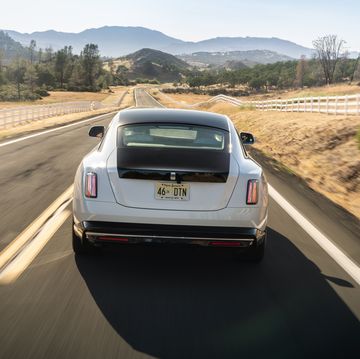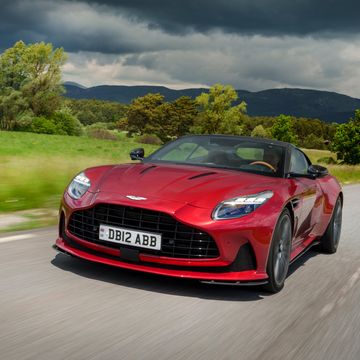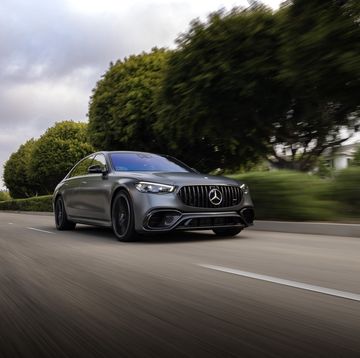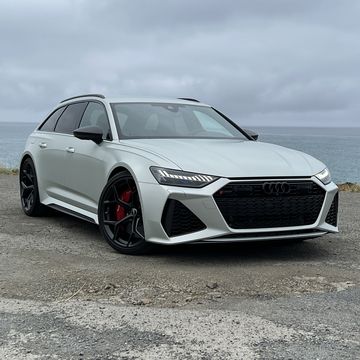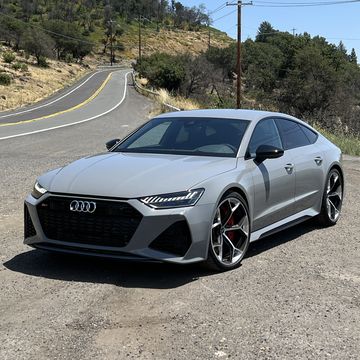It’s a sad truth that a lot of people simply don’t want to drive stick. Lots of gearheads are either in denial about this, or, more frequently, full of gatekeeper’s rage at the idea you can like cars, enjoy sports cars, and have no interest in a manual transmission.
I’m doing my part personally--I only buy manual transmission sports cars, and I only ever will. My calves are tattooed with “Gas” and “Clutch.” But Lotus needs to sell more cars to more people, not sell exclusively manual transmission cars to a hardening-but-diminishing enthusiast class. If you want to grow your sports car line, you simply must offer a competitive two-pedal option.
Lotus has, for at least 20 years, relied on engines from other manufacturers, well, from one other manufacturer: Toyota. Frankly, this has benefitted them. The “Lots of Trouble, Usually Serious” days are over, and it’s an exceedingly rare thing that we hear any complaints about a Toyota-based Lotus powertrain.
The rev-happy 2ZZ four-cylinder in the Elise and Exige was powerful (particularly when supercharged), engaging, pleasant-sounding and durable. We don’t have to spend more than a sentence on the 3.5-liter V-6 out of the Camry, going back to 2010 in the Evora, and subsequently supercharged for later variants, which lives on in today’s Emira V-6.
If one were to make a list of “powertrains of concern,” I assure you, the hearts of the Toyota Camry and early Aughts Corolla would not appear on it.
The Evora was a great Lotus! Though you’ve probably forgotten or never noticed, Lotus also offered it with an automatic gearbox option: a torque converter unit also from the Camry. I tried it once for a day. It was better than you’re probably thinking, but worse than you’d want it to be for the mission, particularly given the car's over-$100,000 price tag.
The new car, the Emira, is brilliant. It takes all the great things about the old Evora GT that worked, such as the lightweight, bonded aluminum structure, the aforementioned supercharged Camry engine, and a slick, engaging manual gearbox, and refining those that no longer worked, such as the aging styling, the bare-bones interior and the outsourced infotainment. It is a thoroughly modern, yet refreshingly simple car that made for fantastic company for The Smoking Tire’s recent 800-mile trip across the UK for the Goodwood Festival of Speed.
Full Disclosure: Lotus paid for our flights, accommodations, and provided the vehicle in exchange for doing two live podcasts from their stage at Festival of Speed and producing a video review of the new car.
But, Lotus’ new Chinese ownership is thinking bigger, as they should. Lotus only sold 576 cars globally in 2022, which is … not a lot.
But things are looking up. V-6 Emira “First Editions” are being built and sold at the rate of around 25 cars per day out of Hethel, and have earned rave reviews from the motoring press. There’s the new, Wuhan-built Eletre SUV, and Lotus has made a big bet on this new Emira variant we’re driving today, with its tax-friendly 2.0-liter engine and modern dual-clutch gearbox from an unlikely source: AMG.
For Lotus' first turbocharged engine since the Esprit, it has sourced a complete power unit, both the engine and the gearbox, from Mercedes’ go-fast division. It’s not a new engine; we’ve seen it under the hood of the rowdy A45 AMG (CLA and GLA in the US) for nearly a decade. The handbuilt aluminum mill, with its twin-scroll, intercooled turbocharger, is the most powerful production two-liter motor on sale. (Yes, certain four-cylinder cars make more power ... when paired with hybrid systems.) Under the completely-covered rear bonnet of the Emira, it makes 317 lb/ft of torque from 3,000-5,500 RPM, then peak power at 6,000, before meeting its 7,200 RPM rev limiter. Mated to AMG’s eight-speed dual clutch gearbox, the motor makes for the most powerful four-cylinder Lotus in history.
For better or worse, Lotus has very limited control over the workings of the powertrain. The engine and transmission arrive at Hethel mated together and sealed from AMG, and Lotus is prohibited from making any hardware or significant software changes.
What Lotus does, and in fact, must change is the entire rear aluminum subframe of the Emira, along with the suspension layout, shock tuning, and rear-wheel offset. The four is wider than the six, which means moving a bunch of things around to make room, and then working backwards to try to make the cars drive similarly to each other with different geometries. As a side-bonus, this saves 26.5 lbs versus the V-6 car, which uses a steel rear subframe.
The four also utilizes a new electrohydraulic power steering system, rather than the traditional pump-driven hydraulic steering for the six.
The only way to tell from the outside whether an Emira has four or six cylinders is to look through the rear window. If you can see the engine, it has six. If you can only see a full-width plastic cover, it has four. Lotus fans in my Instagram comments lamented the cover, but having seen the uncovered engine myself at the Hethel factory, trust me on this, it’s for the best. It was never designed to be displayed. One could also look into the interior and see the wheel-mounted aluminum shift paddles and the modern gear selector lever rather than the traditional manual one.
The engine sounds different from its duty in Mercedes hatchbacks in the same way the six cylinder completely changes character from what you’re used to in a Camry. AMG leaves Lotus to design its own exhaust system. Putting the windows down while cold-starting returns a wild, turbine-like sound from the intake, which is directly outside the driver's window (in left-hand drive cars, more on this later), before it settles into its familiar idle hum. Though the sound is new, the frequency of the engine’s vibrations are unforgettable. I remember thinking how unrefined the engine felt “for a $70,000 Mercedes.” In a British sports car, it's at home.
Like the V-6 variant, the Emira AMG is available in both “Sport” and “Touring” trim. The setups are unique based on the new rear geometries and lighter weight - the AMG comes in at a lithe 3,180 lbs DIN (curb weight with 90% fuel capacity). According to Lotus the four-cylinder is a bit firmer than the six in both trims, with “Touring” set up to the same stiffness as “Sport” in the six. After having spent five days road tripping the countryside in a V-6 Touring, we’re driving an AMG Sport on track and on the country roads near Hethel today, and the stiffer setup is notable (and, to me, less desirable), particularly with track-ready Michelin Cup2 tires. Long story short, we’d prefer the Touring for either engine you order.
The Emira AMG is best experienced on a country road with the windows down, at a 7/10ths clip in sport mode, going in and out of boost to play a turbocharged symphony with your right foot. The variety and the volume of different sounds coming out of the intake and into the driver’s compartment would make the Fast and Furious sound designers drool. Suck in, whoosh, blow off, blow out, hiccup, snort, pop, pop, GASP, bazaaah, crack. It’s a tuner enthusiast’s fantasy, and a left turn from the harmonious, even-keeled trumpeting of the traditional six.
You don’t really want to drive around in “Tour” mode and automatic. As one might expect (and, as in other cars) the economy tune is dull. It shifts too early, keeping the engine out of boost, and doesn’t make the good sounds. You want to be in Sport mode on the street, and Track mode on the track.
The programming of the gear selector lever is an odd choice, requiring double-taps fore and aft into either “Drive” or “Reverse.” I’m not sure who chose this or why, but these extra motions require more thought than they should. No one else is doing this, including Mercedes, and it drastically slows down the pace of three-point turns or tight maneuvering where quick reflexes make a difference.
Fortunately, a side-tap will lock the car into manual mode, and you can slam redline all day without an upshift.
At a brisk, but not racing pace, the great things about the powertrain show themselves. The rev-happy engine blows a heap of midrange torque, shoving the Emira forward at incredible pace without having to go full throttle or push any limits. It’s like the last decade working for Mercedes crossovers was a weighted bat exercise, and now it’s banging home runs without even trying.
The electric power steering feels much lighter than the V-6 car, adding to the overall vibe that this is a more trim car. Pounds were shed, sixty of them, but EPAS makes it feel like more. On partial throttle or partial braking, the shift paddles respond with a “crack!” on upshifts and a “gasp” through the intake on downshifts. The chassis is firmer than I’d prefer (again, I would go Touring for either engine) but not punishing and the car responds well to every input. As a daily drivable or weekend touring car, the Emira AMG is excellent. The trunk is even a little bigger in this version, thanks to the lack of a second bank of cylinders.
I wish I could say things got even better on the track, but sadly, it is not so. That’s not to say the Emira was a disaster; far from it. But the standard set by the V-6 Emira, and the Evora GT before it is very high. We’ll give you the best bits first.
The four-cylinder Emira is light. Really light. As we mentioned, sub-3,200 lbs in 2023 is a very light car, especially with modern tech, power seats, and 360 turbocharged horsepower. And it’s fast. We weren’t able to do instrumented testing, but my butt-dyno says by using launch control, you’re donkey-kicked to sixty in four seconds flat and flying through the quarter mile in the low 12s or possibly even high 11s in the right conditions on the way to a top speed of 180 mph. Lotus says 4.4 seconds to 60 but I suspect sandbaggery. More importantly, this Emira feels fast. The V-6 version feels fast too, but has long legs with its six-speed manual. The AMG-powered car has eight gears and paddle shifters; the sensation of ripping through gears accentuates the accelerative forces.
It’s very tossable, balanced at the limit, and for an EPAS system, communicative through both the front and the rear Cup2 tires. The brakes, while not as immediate as, say, Porsche’s optional PCCB set, remained consistent over many laps on a relatively hot day, and the Emira remained poised under full threshold braking and full throttle corner exits, even with all assists turned off. (In fairness to the brakes, our test car spent all morning with a different set of journalists lapping the track, so they may not have been as fresh as what you'll face on your own track day.)
Michelin Cup 2 tires (245/20 fronts, 295/20 rears!) offer more grip than the car needs, which is great if you want to confidently run clean lines all day, but not so great if you want to practice car control, do a slide for an epic video, or enjoy the sensations of a loose-but predictable car on a closed course. It doesn’t have a mechanical limited-slip differential, instead relying on “e-diff” brake vectoring as part of the AMG drive unit. I was not able to predictably slide it for camera, though maybe some less grippy tires would have helped. Admittedly, there are few people who buy Lotuses for drifting.
The gearbox is a letdown on the track. To quote my The Smoking Tire co-host Zack Klapman, the DCT “ruined so many good moments on track for me.” In theory, it does the right sports car things: changing gear without a torque dip, listening to inputs, and not upshifting when you hit the rev limiter. The way it goes about it is all wrong.
You really want to upshift 1000 RPM before redline, because otherwise the delay in paddle-to-gearbox will be late, and you’ll hit the rev limiter and do a huge bog. Likewise, if you don’t wait long enough before downshifting, you don’t get the gear you call for. You have to leave a much larger “RPM cushion” than you would think is necessary, otherwise you frequently get the right gear at the mid-corner, rather than during straight-line braking. Gear selection problems are super distracting on the entry, and upshift problems result in banged rev limiters and a big bog on the exit. That's not what you want from a track car. Sure, you could drive it in automatic mode but … that’s lame and it doesn’t fix the downshifting issue.
To be fair, the AMG Emira isn’t the only car that exhibits this behavior, and in fact it trickles down all the way from Mercedes-AMG, who, remember, wouldn’t let Lotus make any real changes to the gearbox aside from certain software parameters.
But the car’s closest competitor, the Porsche Cayman, absolutely does not. In a Cayman, upshifts are instant, and downshifts need only one RPM (not 1,000; one) to spare before giving you a downshift. When pushing a car to the limits on corner entry and exit, weight transfer balance is important, rapid response is important, and being able to go down a gear when you have room in the tach is important.
The hardcore few will want the manual, as would I. Dollar for dollar (for $5,000 more) the manual V-6 is the better car, bar none. The manual Lotus sports car is not long for this world, either. At the end of this car’s life cycle, the six-speed will go away for good. Get one while you can.
Lotus will sell a lot of these four-cylinder Emiras, as it should. They are fun! It would make a fine only-car if your life is conducive to such a thing, and a fine weekend car if your plans don’t include race tracks.
The powertrain is proven reliable in the Mercedes variants, and even quite tuner friendly -- a 500-hp Emira is both possible and reasonable, and would be a wild ride -- maybe the aftermarket can offer a transmission upgrade while you're in there. Most importantly, a dual-clutch option mated to a two-liter turbocharged engine opens Lotus up to a lot of new customers globally. Plus, unlike the three-ton Eletre SUV, lightness has been added. Lotus may make SUVs now, but it is still selling great sports cars, and for that, it deserves recognition.
Matt Farah is a lifelong car enthusiast who began his automotive career at dealerships, rental agencies, and detail shops before discovering the power of YouTube in 2006, with his channel The Smoking Tire. Farah has a Bachelors of Fine Arts from the University of Pennsylvania, with a concentration in Photography, helping not only create YouTube content but also providing his own photography for his Editor-at-Large position at Road & Track.
He has hosted and produced television series on NBC Sports, G4 Network, SPEED, and Esquire. The Smoking Tire Podcast is #1 in the category every week of the year. Now at 800+ episodes, The Smoking Tire podcast is the definitive guest stop for who’s who in the auto industry. Farah’s Westside Collector Car Storage is a game-changer in luxury, concierge parking that expanded to a second location in 2023.
